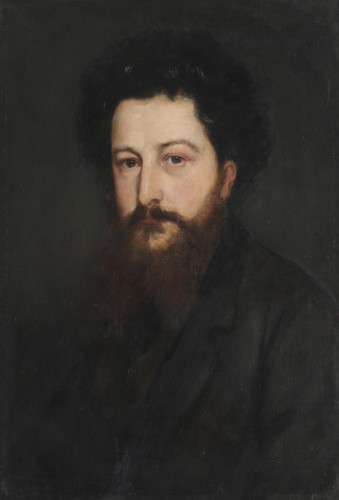This portrait of William Morris, painted when he was about 36 years old, was owned by his mother, Emma. It shows a typical Victorian gentleman, sombrely dressed, regarding the viewer with thoughtful eyes. Morris had a complicated relationship with his family, whose financial interests and social conservatism were in direct opposition to his own Socialist beliefs. Emma was bitterly upset when William decided against becoming a clergyman in order to follow a career in the arts. He was aware of her feelings of disappointment, writing to her that his four brothers “shall keep up the family honour in the World and perhaps even I myself shall not utterly disgrace it”. This portrait suggests that Emma was ultimately proud of her eldest surviving son, though preferred to think of him as an educated gentleman rather than a radical artist.
Fairfax Murray was taken up by the art critic John Ruskin and age 16 was installed as Edward Burne-Jone’s first studio assistant in 1867. He quickly became acquainted with Pre-Raphaelite founder Dante Gabriel Rossetti and the friend of William Morris and Philip Webb. He was given work as artist and glass-painter for Morris, Marshall, Faulkner and Co., working to Burne Jones’s designs and also illuminated Morris’s manuscripts. A watercolur of Morris by Fairfax Murray from the same time is in the National Portrait Gallery’s collection (3652).

